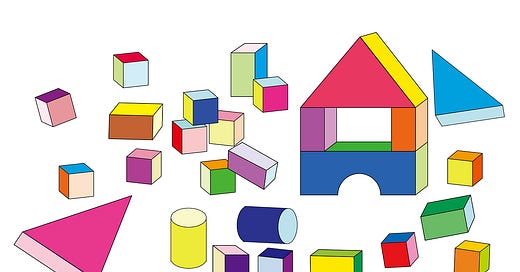The Vital Role of Transfer in Education (Part 1)
Jonathan Firth's Memory & Metacognition Updates #114
Hello! I hope you’re doing well.
For obvious reasons, courses across all levels of education feature learning outcomes and assessments. These aim to characterise what students know and can do after a period of instruction.
While it’s important to check whether students have retained what was covered, the focus can be rather narrow and short term. There’s a risk of missing the broader point of education – students coming to know and do those things in a way that goes beyond the learning activities themselves.
Can students use what they have learned in new situations, long after a course is finished? This question relates to transfer – a familiar concept within cognitive science, but one that’s less widely discussed than it should be across education.
What exactly is transfer?
Transfer concerns any instance where learning impacts on a situation outside of the original study/practice tasks. Typically we mean a positive impact, though there can also be ‘negative transfer’, such as when learning one language causes you to make errors in another.
‘Near transfer’ relates to learning transferring to similar tasks. In the classroom, if a student can generalise what they have learned from Task 1 and use it to solve (previously unseen) Task 2, we would say that near transfer has occurred. For example, if a child has learned to peel a potato, they might be able to use the same tool to peel a carrot. If an art student has learned to use shading on one drawing, we would hope they could use the technique for multiple future drawings.
‘Far transfer’ relates to the impact of study on more abstractly related tasks. If, for example, learning logical relationships in mathematics class makes a student better at critiquing government policies, this would be an example of far transfer.
Why transfer matters
It’s really important that what students learn in education is not confined to repetition of the same routines – they need to be able to generalise what they have used, including to new courses, the workplace, and life in general. This is, after all, one of the main purposes of education. As Barnett and Ceci (2002, p. 613) put it:
“ … much of the financial and human investment in education has been justified on the grounds that formal schooling helps inculcate general skills that transfer beyond the world of academia and thus help students become more productive members of society.”
Those learning objectives and assessments mentioned earlier often don’t test for transfer; there’s a popular assumption that if we provide the building blocks by covering the material in class today, learners (at least those who have mastered it) will somehow figure out the rest for themselves (Perkins & Salomon, 1992).
However, transfer can’t be taken for granted. For a variety of reasons, learners often cannot (or do not) use what they have learned once they finish a course:
“Very often, in instructional settings (and in everyday life) we do not get the transfer we want. Learners acquire skills and knowledge in one situation and fail to make connections to other situations where those skills and knowledge would prove valuable” (Perkins & Salomon, 1992, p. 201).
Why is transfer problematic?
There are a few reasons why people disagree about transfer:
As noted above, transfer can be overlooked or taken for granted in course design, potentially leading to difficulties in students’ later learning.
Experts disagree on how much transfer actually occurs, with some seeing it as almost impossible to achieve, and others considering that it is possible if instruction is carefully designed.
Although it can be hard to demonstrate in research, transfer must somehow happen. Every people tackle a novel task or think about something new, transfer from prior learning must come into play (Haskell, 2001).
Programmes often assume that they develop ‘transferable skills’, but there is some doubt that this is actually happening (see update #28 on memory and creativity, for example). More broadly, this issue links to criticisms of skills-focused (vs. knowledge-focused) curricula.
Next time
Supporting learning that is lasting and transferable can and should be a top priority for education. To my mind, this means having a realistic and evidence-based idea of how transfer works and what we can do to support it.
I will say more about this issue next time. In particular, I want to delve into some of the research on transfer, as well as practical strategies that can be used to support tranfer.
In the meantime, this piece by David Perkins and Gavriel Salomon explains matters in more depth:
Perkins, D. N., & Salomon, G. (1992). The science and art of transfer. In A. L. Costa, J. Bellanca, & R. Fogarty (Eds.), If minds matter: A foreword to the future. (pp. 201–210). Skylight Pubishing.
Have a great week!
Jonathan
Last time: The Psychology of How to Enjoy Free Time
Please note that my slides and similar materials are shared under a CC BY-NC 4.0 license. This means you can use or adapt them with attribution for non-commercial purposes. If you wish to use my materials for other purposes, feel free to get in touch.



